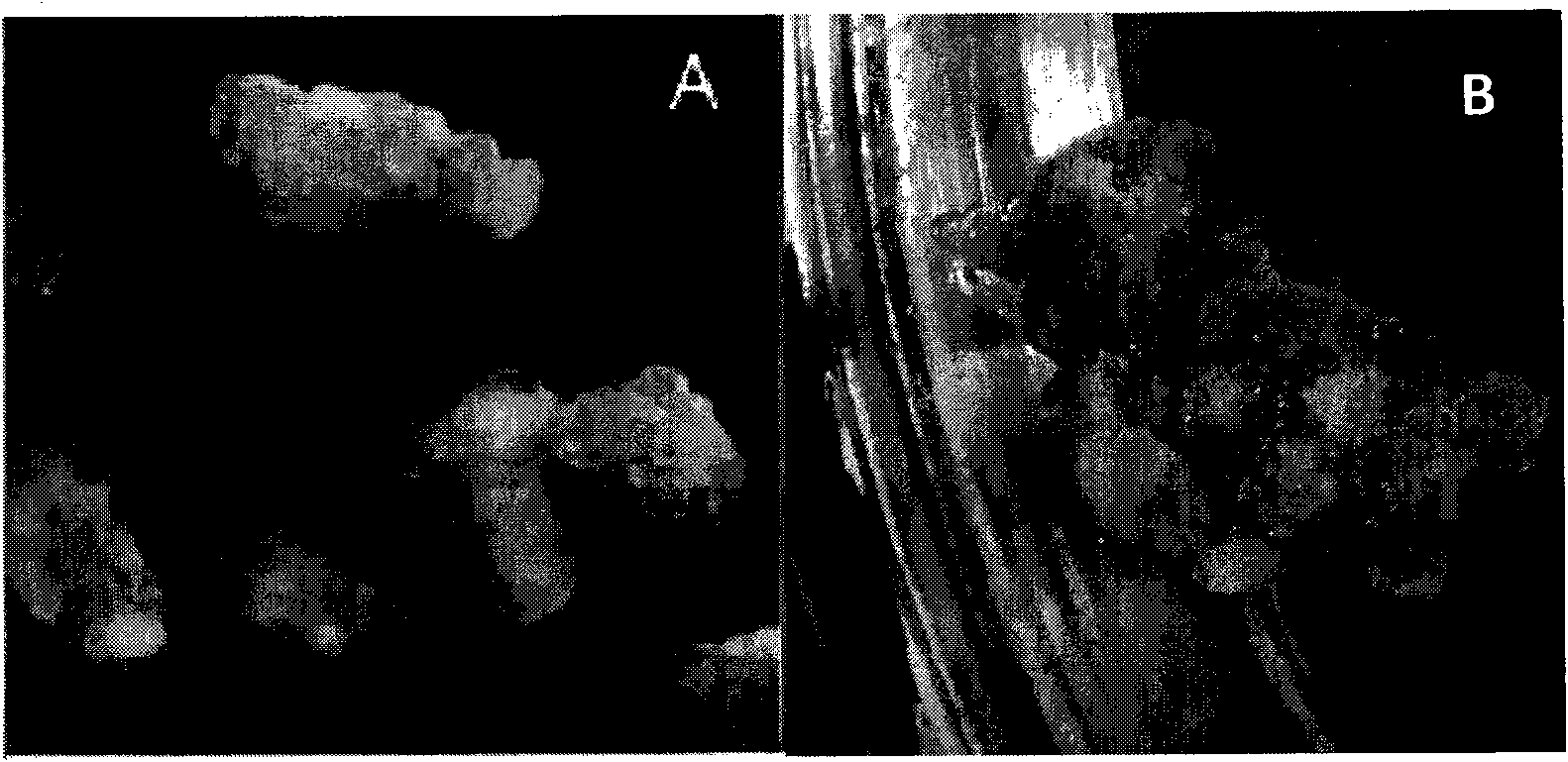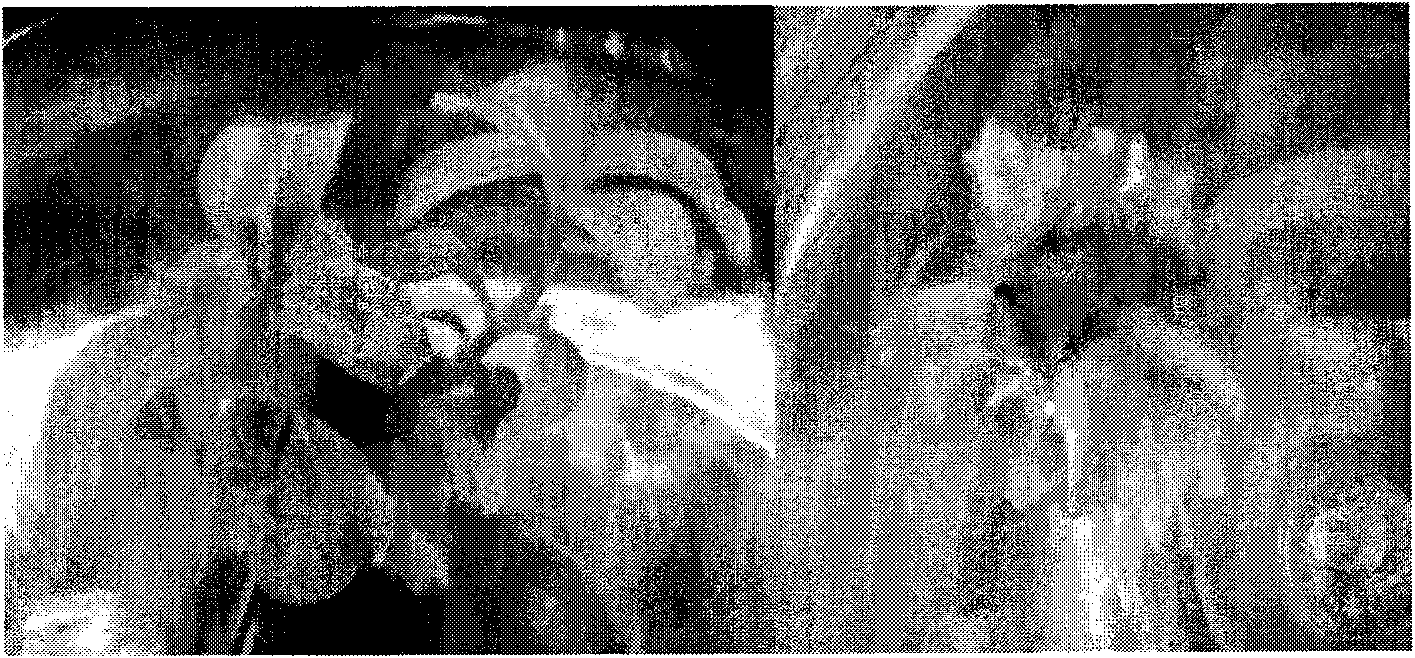Method using hypocotyl of catharanthus roseus for cultivating regenerated plants
A technology for regenerating plants and periwinkles, applied in the biological field, can solve the problems of plant deformity and sterility, the formation of deformed or rootless seedlings, and the limitation of periwinkle transgenic engineering.
- Summary
- Abstract
- Description
- Claims
- Application Information
AI Technical Summary
Problems solved by technology
Method used
Image
Examples
Embodiment
[0032] Step 1: Induction of periwinkle hypocotyl callus
[0033] Put the periwinkle seeds on the MS medium to germinate for 4-5 days, and when the first pair of cotyledons just grow out, remove the hypocotyl, cut into 5-10mm long segments, and place them in callus induction culture on the basis; the callus induction medium is: MS medium+1.0mg / L 2,4-dichlorophenoxyacetic acid+1.0mg / L α-naphthaleneacetic acid+0.1mg / L zeatin+150mg / L Hydrolyzed milk protein + 250mg / L proline + 3% sucrose + 0.3% plant gel; the pH of the callus induction medium is 5.8; after 10-12 days of light culture, the culture temperature is 25 ± 1 ℃, every day After 16 hours of light, a transparent and relatively loose massive callus can be formed at the cut part of the explant, and the callus induction rate can reach 100%;
[0034] Step 2, differentiation of periwinkle hypocotyl callus
[0035] Then inoculate the callus on the differentiation medium, the differentiation medium is: MS medium+5.0mg / L 6-benzyl...
PUM
 Login to View More
Login to View More Abstract
Description
Claims
Application Information
 Login to View More
Login to View More - R&D Engineer
- R&D Manager
- IP Professional
- Industry Leading Data Capabilities
- Powerful AI technology
- Patent DNA Extraction
Browse by: Latest US Patents, China's latest patents, Technical Efficacy Thesaurus, Application Domain, Technology Topic, Popular Technical Reports.
© 2024 PatSnap. All rights reserved.Legal|Privacy policy|Modern Slavery Act Transparency Statement|Sitemap|About US| Contact US: help@patsnap.com










